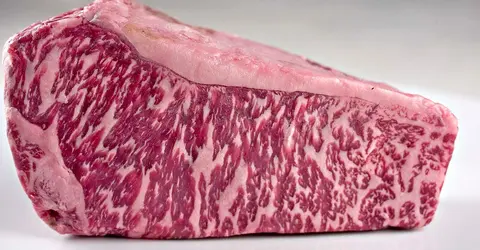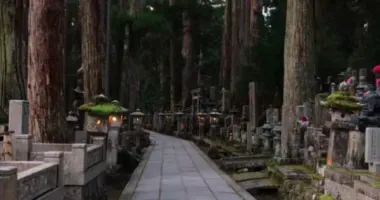Wakayama town 和歌
The city with a feudal castle at the gates of the island of Shikoku
In the heart of Kansai, Wakayama, capital of the prefecture of the same name, offers its riches to passing visitors. Reigning over an immense natural and cultural heritage, this little-known city can be reached in less than 2 hours from Osaka.
The prefecture of Wakayama is a land borrowed from spirituality , sheltering in particular the paths of many pilgrimages and shrines. But it also attracts the curious thanks to its landscapes, starting with the Japanese in search of fine sandy beaches on its west coast. Recognized for its many fruit farms, it is finally a land of gastronomy with unique specialties.
- Read also: Our Guide to the Kansai region
The story of a Japanese feudal town: Wakayama Castle
Founded in 1889 , the city of Wakayama is now home to more than 350,000 inhabitants , nestled south of the mountains of Osaka Prefecture and crossed by the Kinokawa River. The name "Wakayama" is a contraction: it is formed from that of nearby Wakaura Bay and Okayama , the former name of the town's castle.
In terms of history, the city has a feudal past. Indeed, the last feudal rulers of Japan were the Tokugawa family. This family united Japan in 1603, after centuries of civil war, thus marking the beginning of a long era of peace. During the Edo period (1603-1868), the economy and culture of Japan thus flourished.
A secondary branch of the Tokugawa house was then appointed lords of what is now Wakayama prefecture. They are the ones who built the famous Wakayama Castle . Many echoes of the feudal period linger in the city , whether it is the traditional onsen of Ryujin, built by order of the Lords of Wakayama and which is still in operation, or the durability of the famous pilgrimage routes of the mountain. Kii.

Le château de Wakayama
Saigen Jiro
A spiritual imprint: the temples and shrines of Wakayama
The town of Wakayama is home to a castle, which has become its emblem and made it famous. Wakayama Castle, built in 1585 by order of Hideyoshi Toyotomi , rises on Mount Torafusu in the center of town. Rebuilt identically after the bombings of the Second World War, it is a privileged place to admire the hanami thanks to its hundreds of sakura . The glowing leaves of the maple trees in autumn can also be admired at the Momijidani Garden, designated a place of scenic beauty in 1985.
You will also find many shrines and temples, such as Awashima Jinja , the doll shrine, the Kiimidera temple whose cherry trees are the first to bloom each year in Kansai, or the small shrine of Itakiso-Jinja , dedicated to the worship of trees.
Located in the prefecture of Wakayama, Mount Koya and its sumptuous temples as well as its cemetery is of course a high spiritual place not to be missed under any circumstances.
The Kumano Kodo Shinto pilgrimage routes , classified as World Heritage by Unesco on the Kii peninsula, offer a unique experience for all hikers and allow you to immerse yourself deeply in the cultural and spiritual wealth of Japan.
If you want to discover Wakayama and its region, let yourself be tempted by one of our organized tours!
Visits to do around Wakayama
While in Wakayama, do not miss the small Bansho park , offering a refreshing panorama of the turquoise blue of the Pacific Ocean, between Honshu and Shikoku. Roam the hills around town, covered with fruit trees: yuzu, peaches, persimmon, mikan tangerines ... try your hand at picking at farms in the region. The entire Wakayama region is full of varied and magnificent landscapes, between sea and mountains .
Nature lovers will be delighted, starting with the most beautiful beaches in Kansai . Shirahama is a seaside resort popular with the inhabitants of Wakayama and Osaka, as is Kataonami Beach, which stretches for more than a kilometer. The cliffs and caves of Kino Matsushima can be visited during a cruise, while the astonishing rocks of Hashigui-Iwa can be admired at sunset.
- Read also: Cape Hinomisaki
Inland, the Nachi waterfall , one of the most imposing in the country with its 133 meters high, is a sacred place of Buddhism and Shinto. Visitors looking for adventure can try their hand at rafting down rapids in the Doro-Hatcho Gorge .
Finally, the splendid Seiganto-ji Buddhist temple and its vermilion pagoda is nestled in a magnificent natural setting, against a backdrop of mountains and waterfall.
- To read also: The Nachi no hi Matsuri
The culinary specialties of Wakayama
Wakayama is the perfect place to stir your taste buds and make you discover new horizons ... In addition to being a fruit paradise , the city and the region are proud of their unique ramen recipe, based on a pork broth flavored with soy sauce, the latter being native to the region. Ask for a " chuka soba " to be sure to enjoy the recipe! Seafood and fish of all kinds are also an essential component of local Wakayama cuisine.
So, if you like fresh tuna, you've come to the right place: the country's finest catches can be found there, especially at the Kuroshio market. In the restaurants of the city you can taste the best seafood and fish, such as sea bream, caught that very morning. Meat lovers will turn to Kumano wagyu beef, with marbled flesh. Finally, another Wakayama specialty not to be missed is Kishu Umeboshi , a ume (Japanese plum) marinated in salt.
- Read also: The culinary specialties of Kansai

The marbling of Japanese beef indicates its high quality
Address, timetable & access
Address
Timetable
From Shin-Osaka station, one hour by train to Wakayama (JR Hanwa line)Website
https://fr.visitwakayama.jp/destinations/wakayama-city/


























